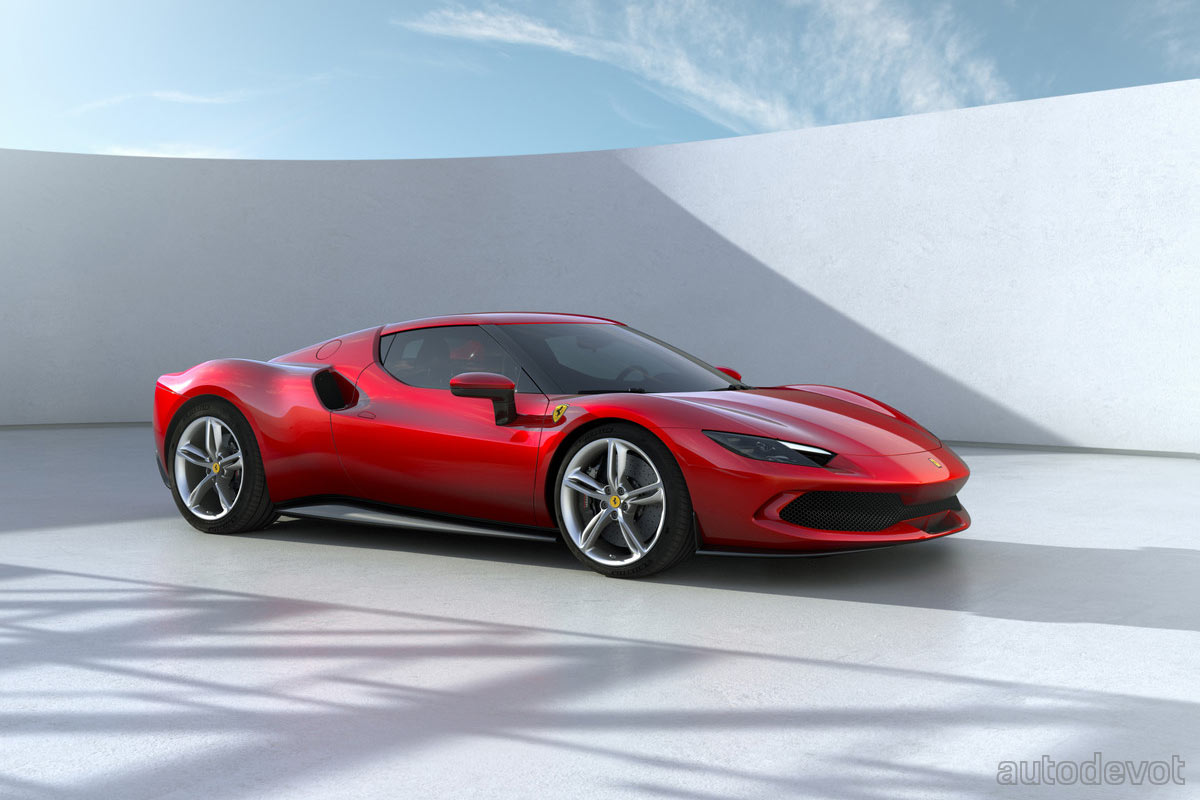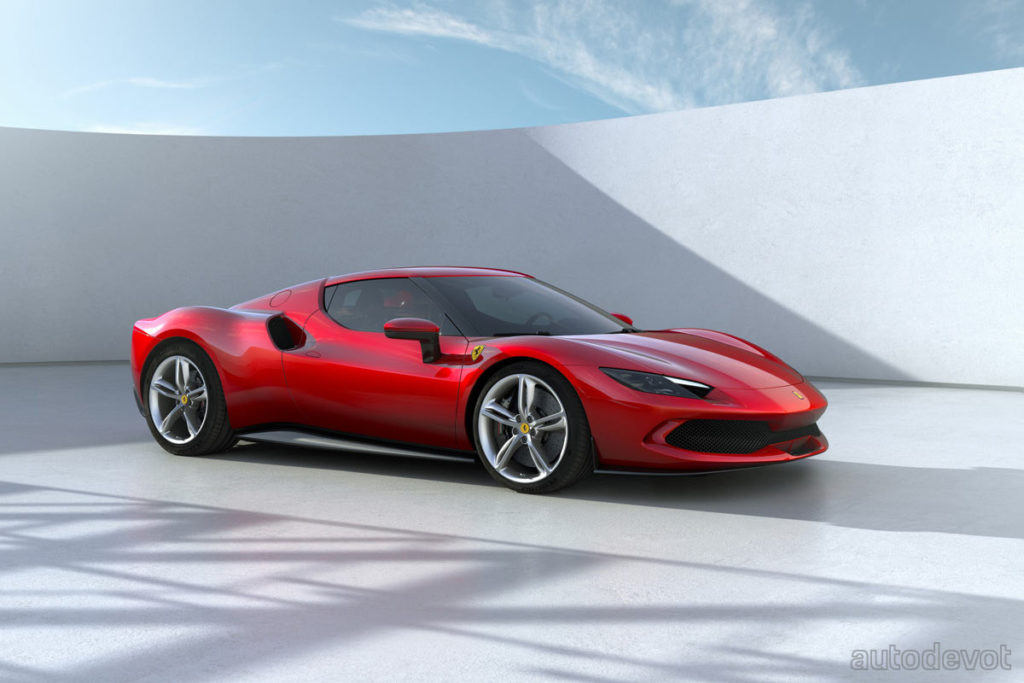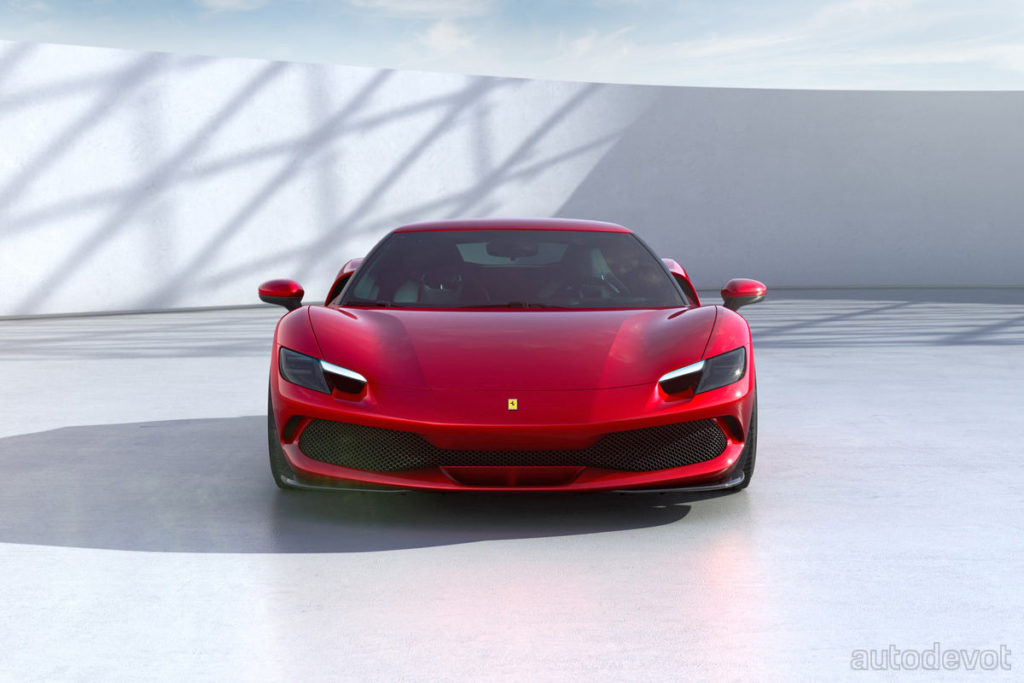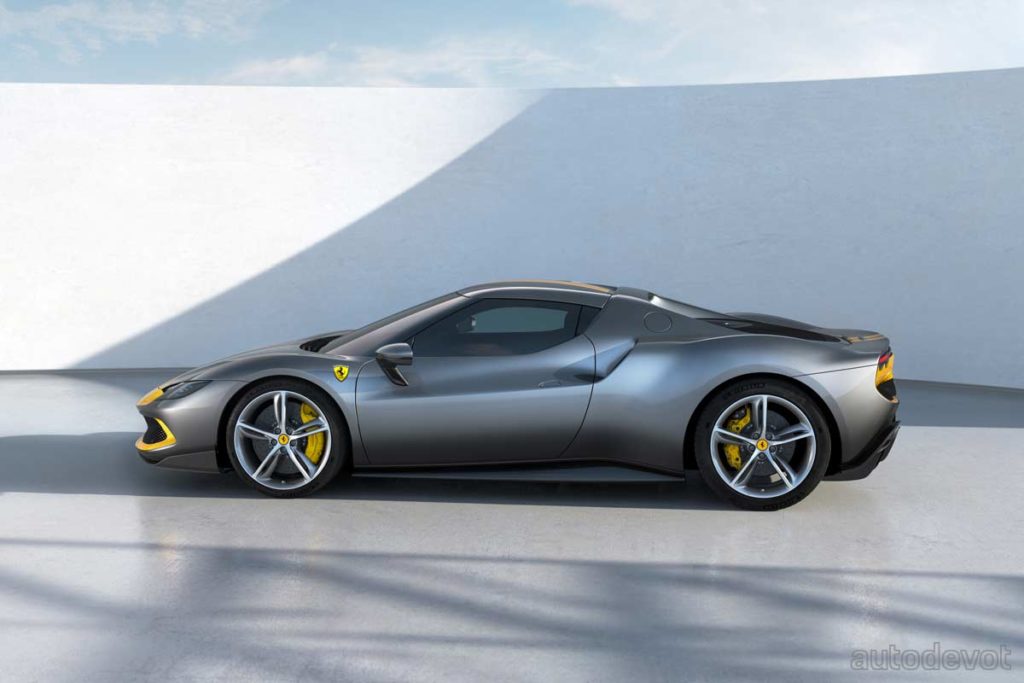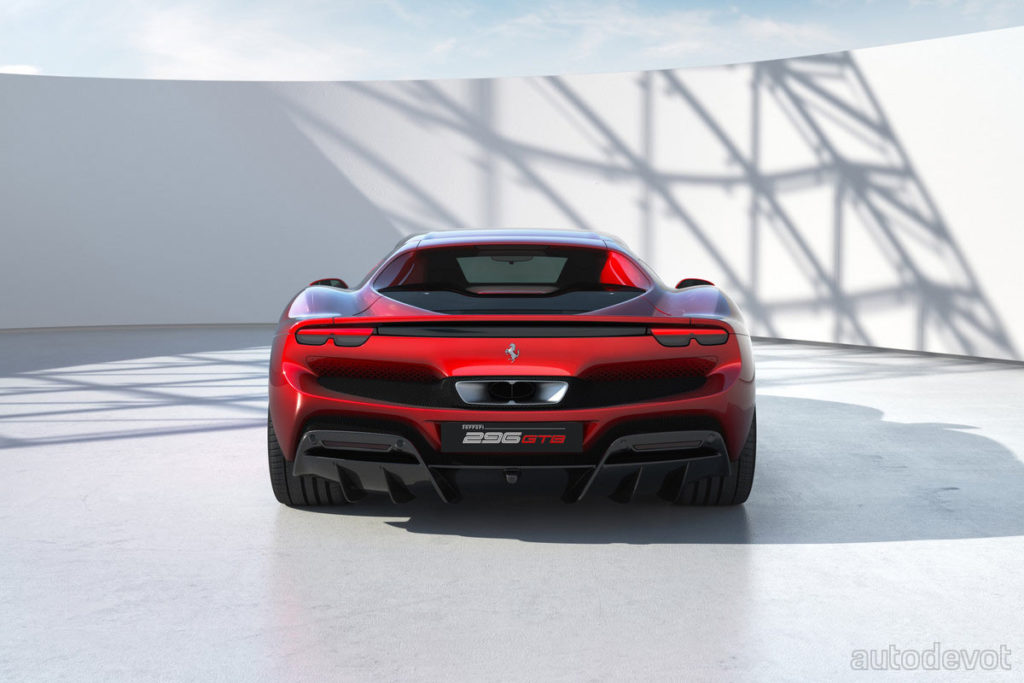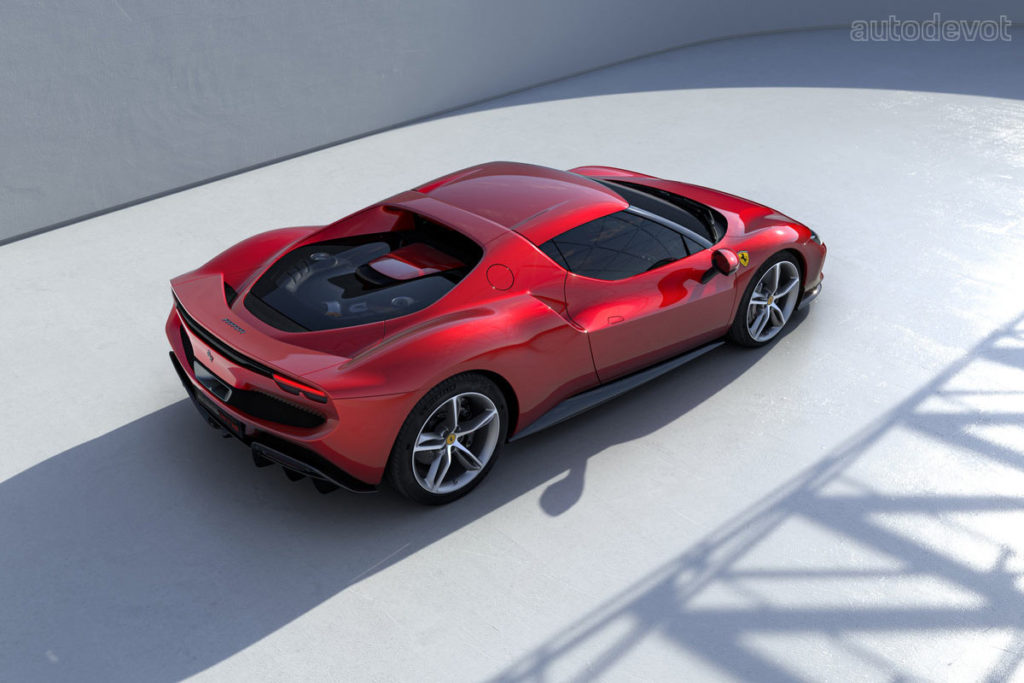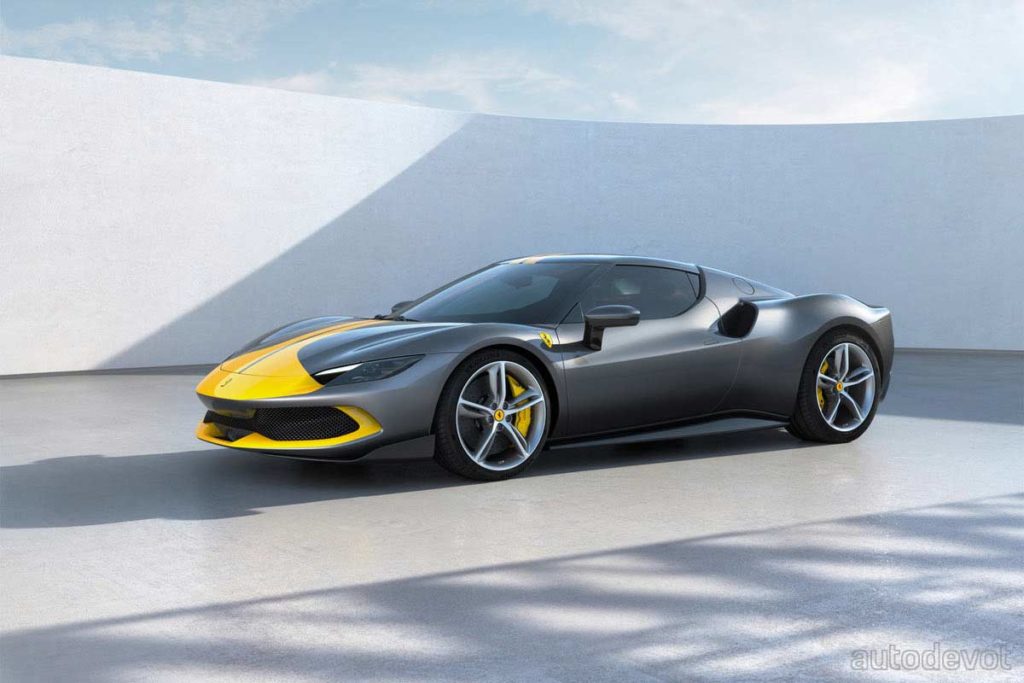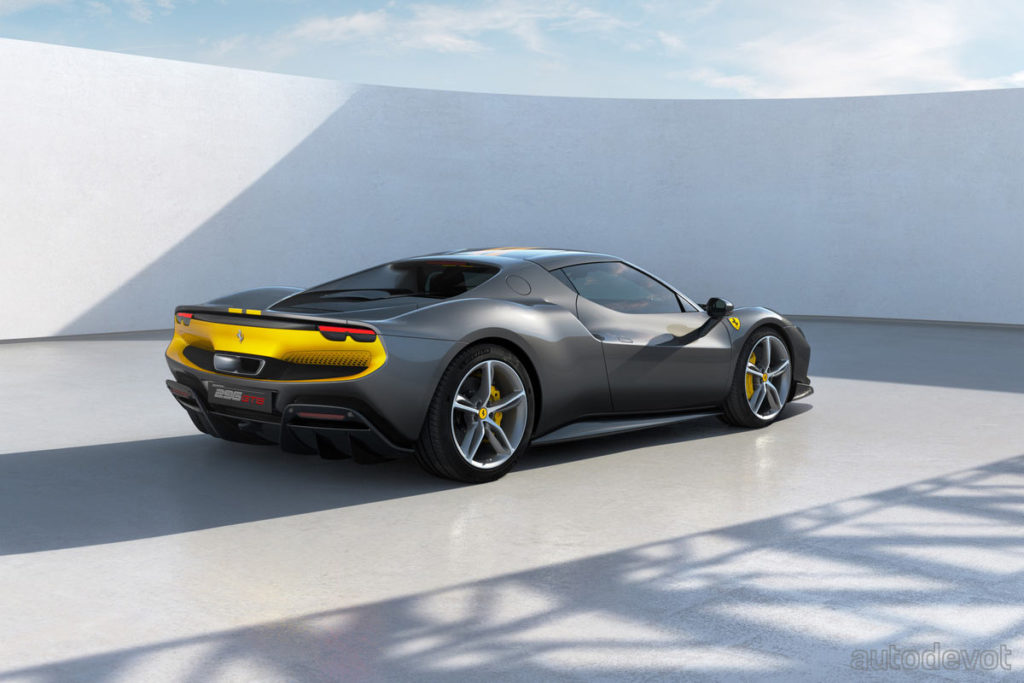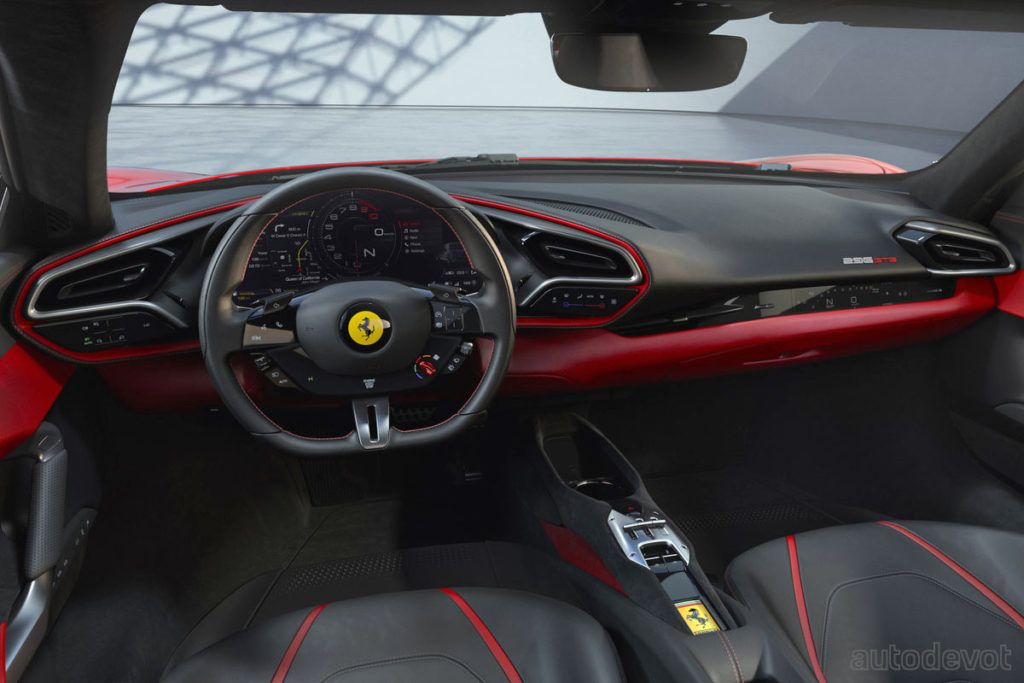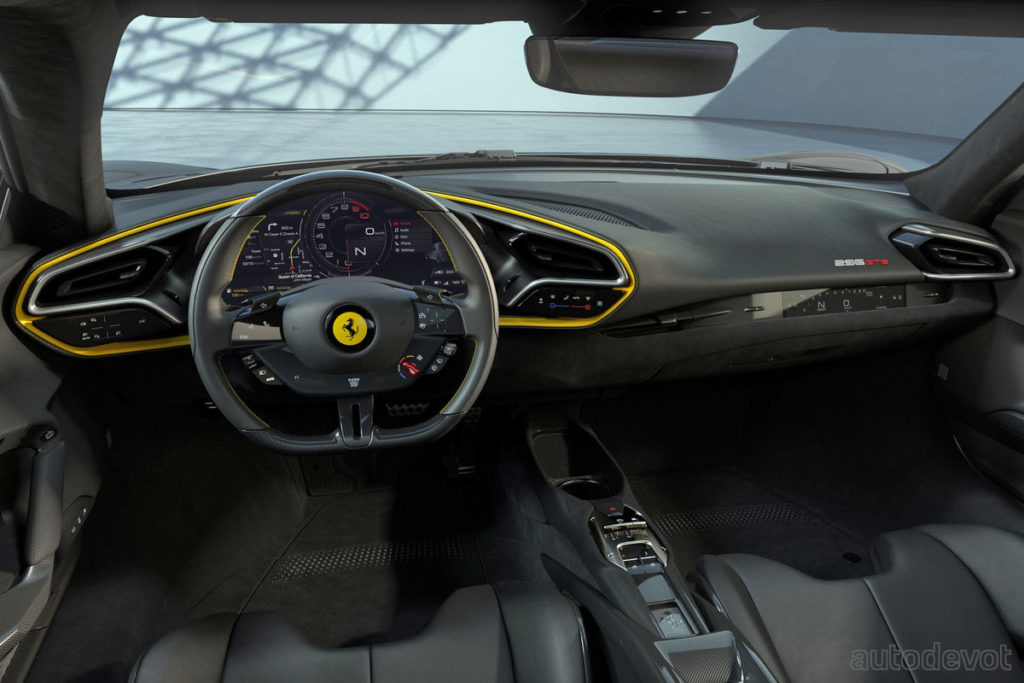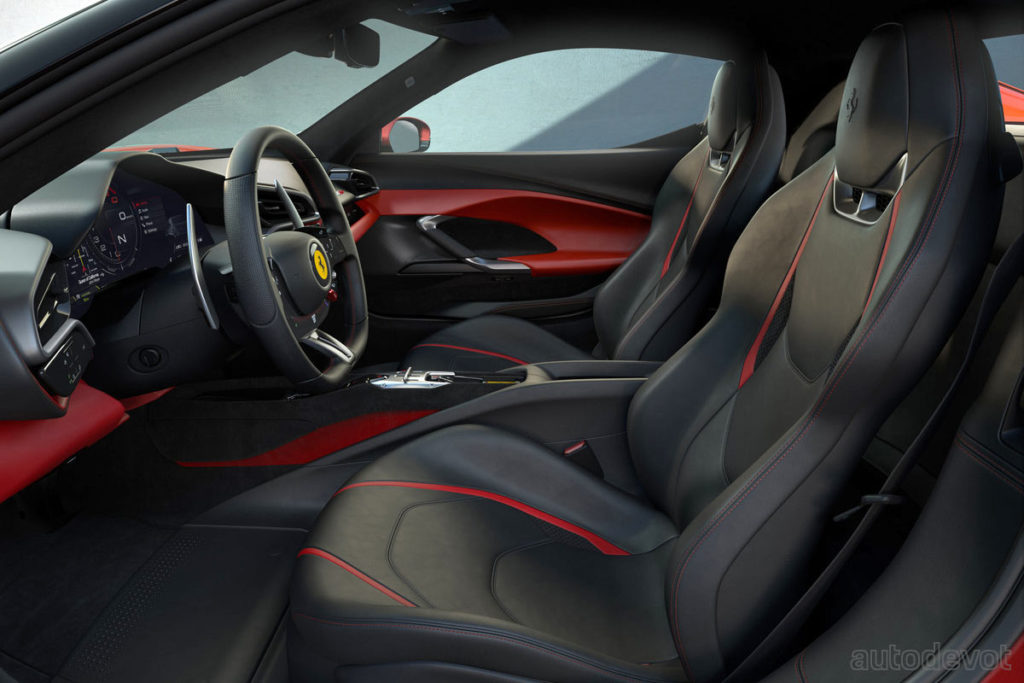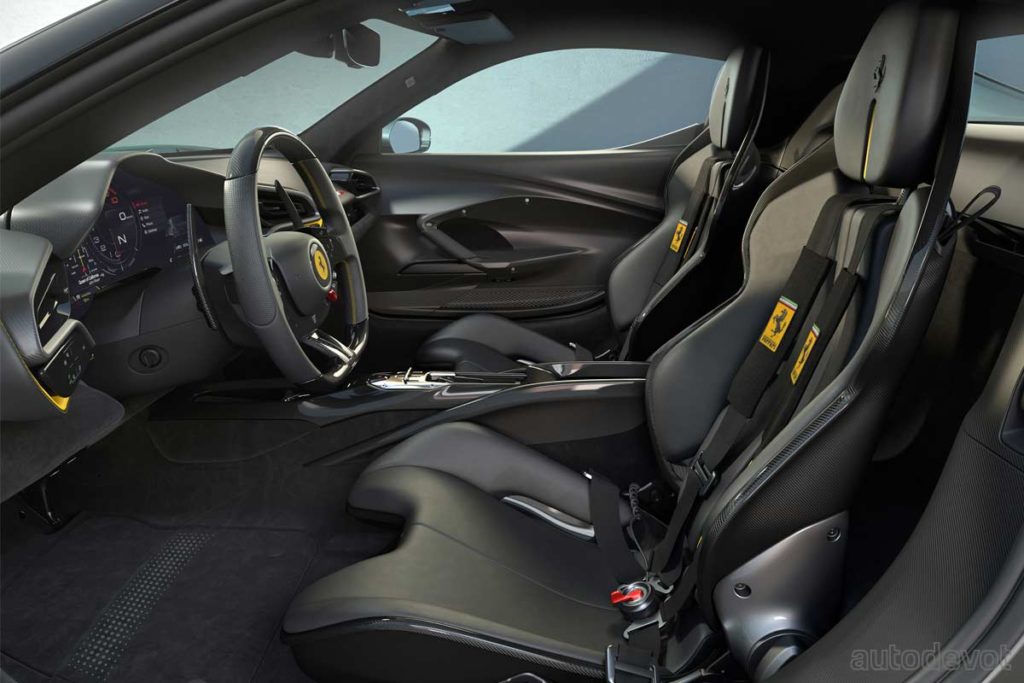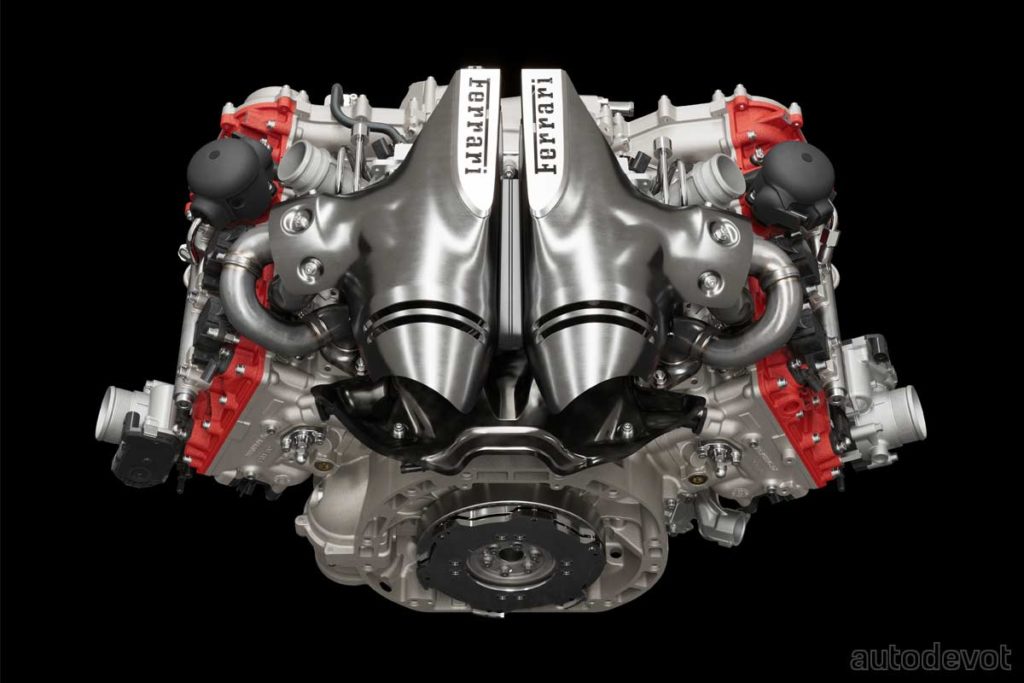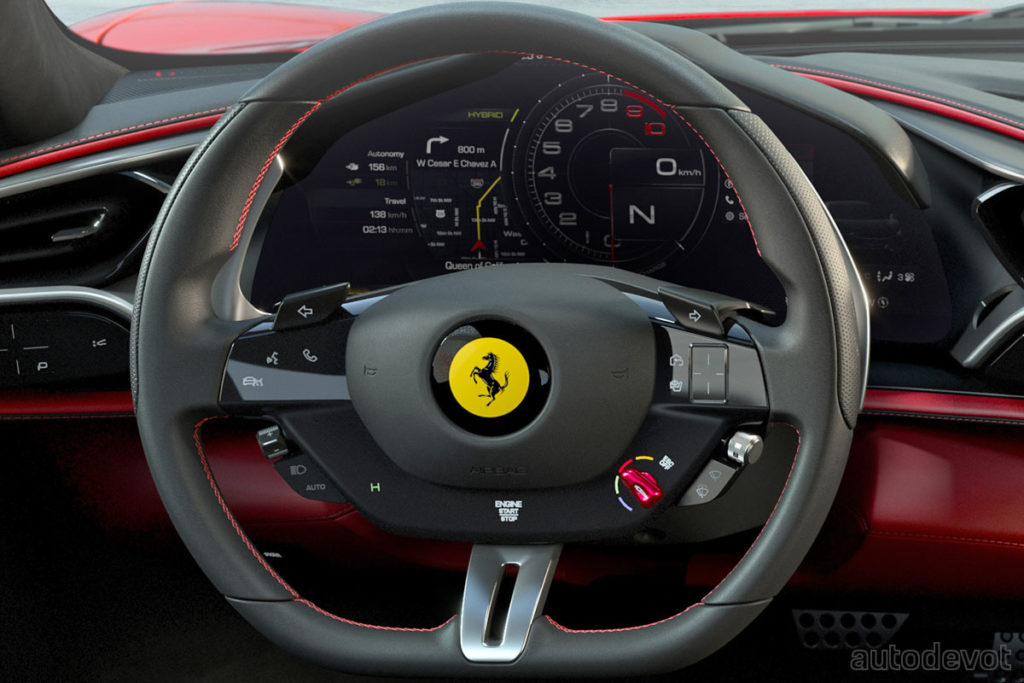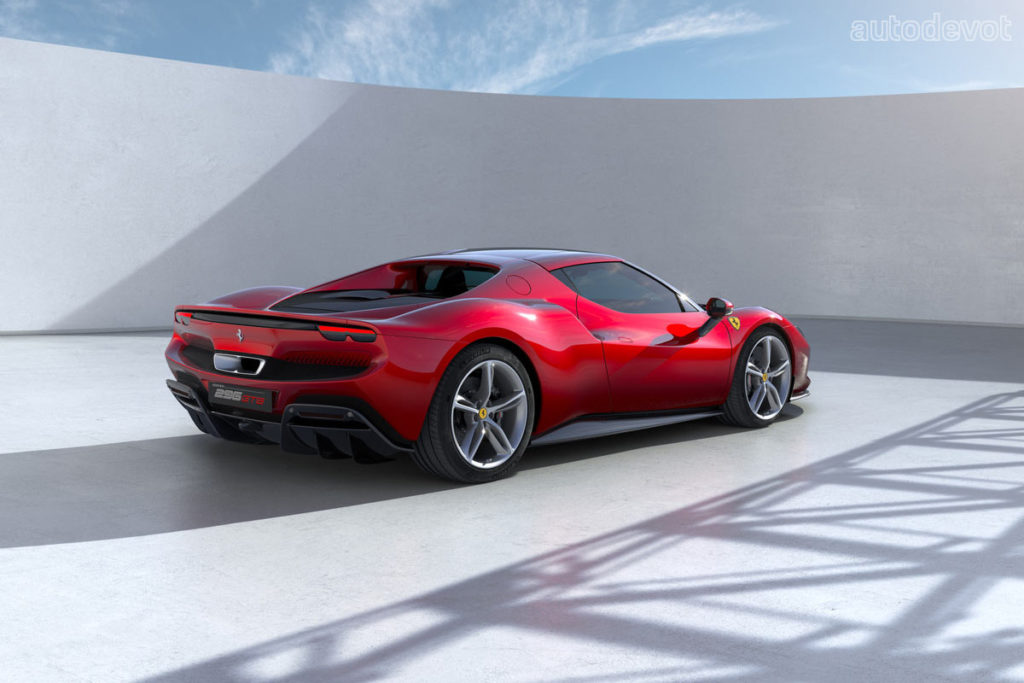The last time a Ferrari road car had a six-cylinder engine was about 47 years ago! Indeed, that was a long time ago and most of us were just sperms floating around in our father’s balls at the time. But the good news is that the Dino 246 GT’s spiritual successor is here with a brand new V6. However, it’s not just the V6 that powers the car.
Will talk about its powertrain in a minute, but let’s start with the name itself. Just like the 246 which suggested the engine capacity and cylinders, the 296 stands for 2.9-litre and 6-cylinders. The GTB is of course, Gran Turismo Berlinetta. As for the styling, you do see a mix of SF90 Stradale — the brand’s first PHEV, the one-off P80/C, and even the J50. The standard 20-inch rims of the 296 GTB have plastic spokes, but there are a couple more options including five-spoke forged rims and carbon fibre rims; the latter is 8 kg (18 lbs) lighter over the former. The brakes measure 398 mm at the front and 360 mm at the rear.
There are no underbody active elements, but instead, there are these curved vanes or blades or whatever you wanna call them, to manage the airflow underneath the car. The air enters via the bumper and through that opening at the front. There is, however, an active black blade that rises up from the rear bumper, just behind the integrated spoiler. Here’s a short clip of how it works —
#Ferrari296GTB Active rear blade. pic.twitter.com/cZ8VhSGHPe
— Sagar (@autodevot) June 24, 2021
This active spoiler according to Ferrari, was inspired by LaFerrari, and generates a rear downforce of 360 kg (794 lbs) at 250 km/h (155 mph) in high-downforce mode with the Assetto Fiorano package.
Speaking of the package, it is essentially a track package that includes Multimatic dampers from GT racing, extensive usage of lightweight materials including carbon fibre both on the exterior and interior of the car, redesign of some of the components including the door panel, for a total weight saving of over 12 kg (26 lbs), Michelin Sport Cup 2 R tyres, optional Lexan rear window (which brings the total weight reduction to over 15 kg), and of course, 250 Le Mans-inspired special livery.
The cockpit is similar to that of the SF90 Stradale, including the driver display flanked by air vents on either side, and gated shifts-like controls on the centre console. An extra display for the passenger comes standard. Notice that the Assetto Fiorano gets a more sporty but uncomfortable looking seats.
Moving on to the juicy bits of the story then, the ICE actually displaces 2,992 cc, which we can round off to 3.0L but Ferrari wants us to consider it as 2.9L. It’s a 120-degree V6 with two turbos nestled inside the “V”. And yes, the 296 GTB is a PHEV with an electric motor (MGU-K) at the rear. An 8-speed DCT drives the rear wheels. The ICE itself produces 488 kW (663 metric hp) at 8,000 rpm (with 98 octane petrol); the engine revs up to 8,500 rpm. The MGU-K develops 122 kW (166 metric hp) and 315 Nm (232 lb-ft). The hybrid system output, however, is 610 kW (830 metric hp) and 740 Nm (553 lb-ft) of max torque. A floor-mounted 7.45 kWh lithium-ion battery pack is good for a pure electric range of up to 25 km (16 mi). The car’s dry weight with optional lightweight elements is claimed to be 1,470 kg (3,241 lbs).
As for the official performance figures, a 0-100 km/h (62 mph) sprint is claimed to take 2.9 seconds and 7.3 seconds to 200 km/h (124 mph). The top speed is claimed to be over 330 km/h (205 mph).

Leave a Reply
Note: Comments that are unrelated to the post above get automatically filtered into the trash bin.
